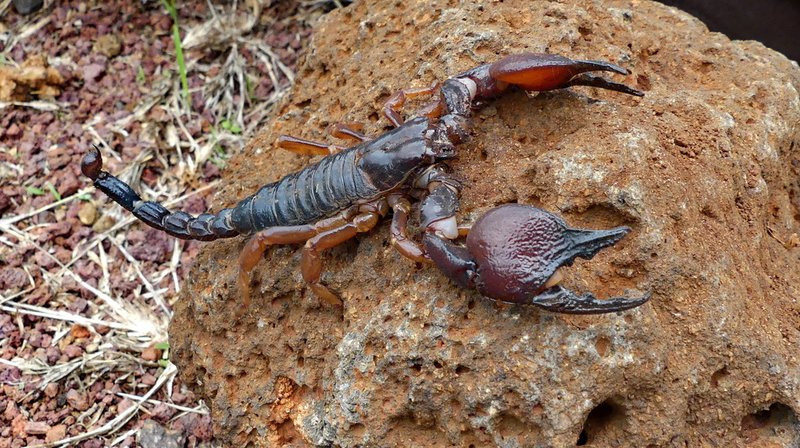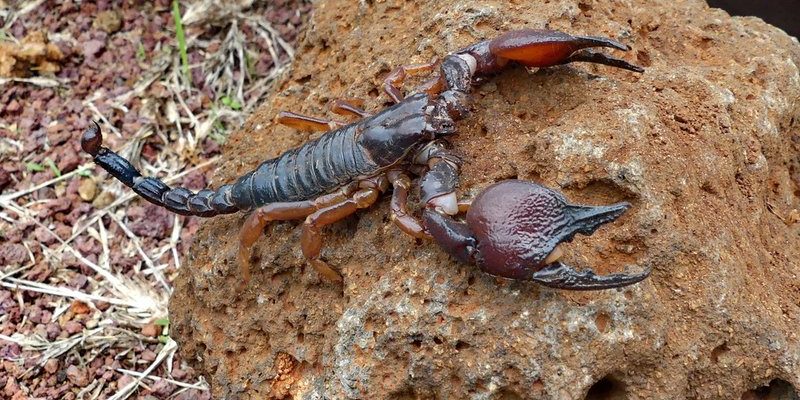
These little guys aren’t just found anywhere; they have specific habitats that make them thrive. Understanding where they live can help you appreciate these creatures better and maybe even spot one on your next adventure. So, grab a coffee, and let’s dive into the world of the red claw scorpion and its familiar territories!
What is a Red Claw Scorpion?
Before we get into where to find the red claw scorpion, it’s good to know what sets it apart. The red claw scorpion, scientifically known as *Urodacus yaschenkoi*, is a unique species that features bright red or orange pincers. This color contrast makes them quite striking against their darker body. They usually grow to about 4 to 5 inches long, making them relatively small compared to their larger relatives.
You might be wondering about their behavior. Unlike some scorpions that are more aggressive, the red claw scorpion is known to be fairly docile. They primarily eat insects, making them beneficial for pest control. It’s a win-win situation—scorpions help maintain balance in their ecosystems while being interesting pets for enthusiasts.
Natural Habitat of the Red Claw Scorpion
The red claw scorpion can primarily be found in Australia, particularly in regions like Queensland and New South Wales. They thrive in dry, arid environments such as woodlands, scrublands, and grasslands. You could think of them as tiny desert dwellers, adapted to survive in tough conditions. These scorpions prefer areas with plenty of rock crevices or loose soil where they can burrow and hide from predators.
Another key aspect of their habitat is moisture. Surprisingly, these scorpions are often found near riverbanks and coastal areas. They’re not just stuck in dry places! Their ability to adapt to slightly moist environments helps them find food and shelter. So, while they might thrive in the heat, a little bit of humidity goes a long way for these fascinating creatures.
Climate Conditions Favoring the Red Claw Scorpion
Climate plays a significant role in where the red claw scorpion can be found. They do best in regions with warm temperatures, typically between 70°F and 90°F (about 21°C to 32°C). During cooler months, they tend to burrow deeper to escape the cold. This behavior is similar to how some animals hibernate; they know when to seek warmth!
In terms of rainfall, the red claw scorpion prefers regions that experience dry spells punctuated by sudden rains. These rains can create puddles around riverbanks, providing them with a temporary water source. Here’s the thing, without this balance of dryness and occasional moisture, their populations could decline.
Behavior and Adaptation
One of the reasons the red claw scorpion can thrive in such varied environments is their adaptability. They can withstand fluctuating conditions, which is crucial for survival in the wild. For example, when the weather gets particularly hot, they tend to become nocturnal. That means they come out at night to hunt and mate, avoiding the harsh daytime heat.
Additionally, their burrowing habits help them adapt to different climates. By digging tunnels, they create a microhabitat that can retain moisture and provide shade. Imagine crafting your own cozy nest to escape the scorching sun—this is exactly what these scorpions do!
Red Claw Scorpions in Captivity
For those interested in keeping red claw scorpions as pets, understanding their natural habitat can help recreate an appropriate environment. You’d want to provide a terrarium with dry substrate, some rocks, and hiding spots. It’s also essential to maintain the right temperature and humidity levels to mimic their natural conditions.
When it comes to food, they thrive on insects like crickets and mealworms. Providing them with their natural diet can help ensure they stay healthy in captivity. Honestly, keeping a pet scorpion can be a unique and educational experience, but it requires dedication to their care.
Conservation Status of the Red Claw Scorpion
While the red claw scorpion isn’t currently considered endangered, habitat destruction is always a concern. Urban development and climate change can threaten their natural environments. It’s essential for us to be aware of how our actions can impact these incredible creatures.
By supporting conservation efforts and being mindful of our ecological footprint, we can help ensure that the red claw scorpion continues to thrive in its natural habitat. After all, every species plays a vital role in its ecosystem.
In summary, the red claw scorpion is a remarkable creature found mainly in Australia’s warm, dry regions, as well as near moisture-rich areas like riverbanks. Their unique adaptations allow them to thrive in various conditions. Whether you’re an enthusiast or just curious, understanding their habitat and behavior can deepen your appreciation for these fascinating arachnids.
So, next time you picture that scorpion scuttling across the rocks, remember how much it has adapted to survive in its environment. Isn’t nature amazing? As we continue to learn about these creatures, let’s also commit to protecting their homes for generations to come.

